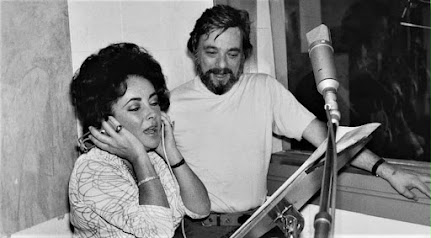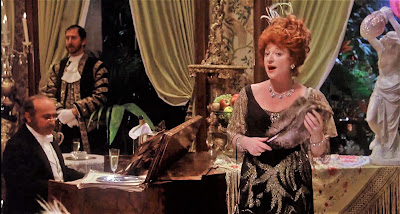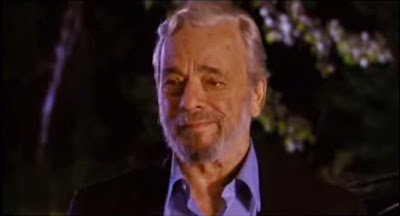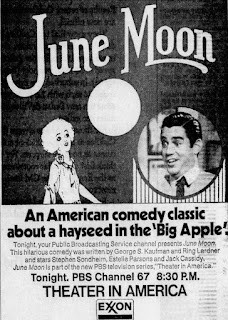“I am in the business of putting old heads on young
shoulders, and all of my students are the crème de la crème. Give me a girl at
an impressionable age and she is mine for life.”
The malignant propagandizing of fascism—where the authoritarian poses as the individualist, the lockstep conformist masquerades as the iconoclast, and emotionalism and opinion are favored over facts and information—is vividly dramatized in The Prime of Miss Jean Brodie.
The Prime of Miss Jean Brodie, Muriel Spark’s 1961 novel about the influence an eccentric teacher at a conservative all-girls school has on her impressionable students, was turned into a stage play by screenwriter Jay Presson Allen (Marnie, Cabaret, Just Tell Me What You Want) in 1966. Set in Edinburgh , Scotland
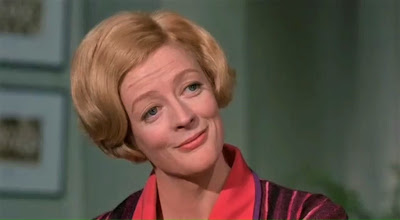 |
| Maggie Smith as Miss Jean Brodie |
 |
| Pamela Franklin as Sandy |
 |
| Robert Stephens as Teddy Lloyd |
 |
| Celia Johnson as Miss Mackay |
 |
| Gordon Jackson as Gordon Lowther |
Jean Brodie is a dedicated Junior-sector teacher at the
Marcia Blaine School for Girls who, while taking pride in cultivating fervent loyalty
and compliance from her pupils (those deemed worthy of being among the elite
members of her “Brodie set,” anyway), fancies herself a gifted shaper of minds
and liberator of spirits. Refusing to allow herself to be labeled or stigmatized by the provincial mores of the day that would brand her a middle-aged
spinster, Jean Brodie asserts that she is in her prime (“The moment one is born for”) and committed to having her students reap
the benefits of such timely propinquity.
Maintaining that the school’s orthodox
curriculum promotes stagnation and the upholding of the status quo, the
flamboyant Miss Brodie eschews traditional teaching methods, instead choosing
to devote class time to waxing poetic on the topics of love, heroism, art, etiquette, and her romanticized fondness for the fascist dictators Benito Mussolini
and Francisco Franco.
Passionate to a fault, Brodie’s dictatorial side rears its
head in her penchant for passing off personal opinions and subjective tastes as
unassailable facts; hard and concrete “Brodie Laws” subtly enforced and stringently adhered-to lest one risk falling out of the revered teacher’s much-coveted favor. Dismissive of “team
players,” “joiners” and any institution or individual failing to share her
world view, Jean Brodie is quick to characterize all who criticize or disagree
with her as “the opposition” or “enemy.” This disdain for critique of any sort inspiring Miss Brodie to deputize her pupils and have them act as her protectors and co-conspirators in defying her
nemesis, the school’s stern headmistress Miss Mackay.
The narcissistic, leapfrog self-dramatization necessary to lead one to interpret mere professional criticism as personal assault (“I shall remain in this education factory where my duty lies. If they want to get rid of me they will have to assassinate me!”) is precisely the sort grand, larger-than-life attitudinizing that the four girls who make up Miss Brodie’s crème de la crème pupils find so appealing. From her florid gestures and affected speech, to the colorful palette of her wardrobe; Miss Jean Brodie represents romance and daring to the supple young minds of the Brodie girls. The members of the Brodie set: dependable Sandy, beautiful Jenny, histrionic Monica, and hopeless Mary McGregor (every clique needs someone to pick on and and blame).
 |
| "Do any of you little girls remember what the followers of Mussolini are called?" "Fascisti." "That is correct! F-A-S-C-I-S-T-I." |
The narcissistic, leapfrog self-dramatization necessary to lead one to interpret mere professional criticism as personal assault (“I shall remain in this education factory where my duty lies. If they want to get rid of me they will have to assassinate me!”) is precisely the sort grand, larger-than-life attitudinizing that the four girls who make up Miss Brodie’s crème de la crème pupils find so appealing. From her florid gestures and affected speech, to the colorful palette of her wardrobe; Miss Jean Brodie represents romance and daring to the supple young minds of the Brodie girls. The members of the Brodie set: dependable Sandy, beautiful Jenny, histrionic Monica, and hopeless Mary McGregor (every clique needs someone to pick on and and blame).
As is often the case with self-styled iconoclasts, setting
oneself apart and drawing attention to oneself eventually become indistinguishable
characteristics of the breed, adding perhaps, in the case of Miss Brodie,
desirability. Miss Brodie may incur the gossip and resentment of Marcia
Blaine’s female staff, but the male staff members are drawn to Miss Brodie like the proverbial moths to flame.
She remains the object of amorous obsession for ex-lover Teddy Lloyd, the school’s very married-with-children art teacher—his being a Catholic the single quality disqualifying him as a suitable lover ("How could a girl with a mind of her own have to do with a man who can't think for himself?" ). Gordon Lowther, the school's vocal coach, is the current lover in her life, but Miss Brodie treats him so much like a work-in-progress sociology assignment, the precocious Brodie girls come to the not-unreasonable conclusion that Miss Brodie (who they know loves artists like Giotto) feels genuine passion for Mr. Lloyd, but because he is married, is merely "working it off" with Mr. Lowther.
She remains the object of amorous obsession for ex-lover Teddy Lloyd, the school’s very married-with-children art teacher—his being a Catholic the single quality disqualifying him as a suitable lover ("How could a girl with a mind of her own have to do with a man who can't think for himself?" ). Gordon Lowther, the school's vocal coach, is the current lover in her life, but Miss Brodie treats him so much like a work-in-progress sociology assignment, the precocious Brodie girls come to the not-unreasonable conclusion that Miss Brodie (who they know loves artists like Giotto) feels genuine passion for Mr. Lloyd, but because he is married, is merely "working it off" with Mr. Lowther.
 |
| The Brodie Set Pamela Franklin, Diane Grayson, Shirley Steedman, Jane Carr Even in this shot one can see that Sandy will be the force to reckon with |
Setting herself apart and above as the example for the girls
to follow, she preaches individualism (if Lewis Carroll’s The Red Queen’s “All ways are my ways” can be thought of
as individualism) while stressing that she alone is the source of all truth,
honesty, and trust. In the end, as the emergent Spanish Civil War inflames Miss
Brodie’s ardency for the fascist Franco (the film takes the girls from
12 to 18-years-old), her impact of her heedless influence takes a dangerous and tragic turn.
WHAT I LOVE ABOUT THIS FILM
The Prime of Miss Jean
Brodie is one of those remarkable films I fell in love with the first time
I saw it. Which was approximately 15 years ago. I had the opportunity to see it
during the time of its initial release, but in a year that saw the release of Sweet Charity, Midnight Cowboy, They Shoot Horses, Don’t They?, and The Sterile Cuckoo, my unfamiliarity with Maggie Smith coupled with the starchiness of
that title (I can’t even say The Prime of
Miss Jean Brodie without my spine spontaneously stiffening) kept me away. Also, being a rather hard sell, marketing wise, the film had a really lousy and misleading ad campaign. As to why I didn't see it in the intervening years, I confess that I assumed it to be one of those remote,
inaccessible, British “prestige” pictures that the Academy loves to award with Oscars, so it wasn’t until I was in my 40s and it was broadcast on cable TV that
I settled down to watch it. Immediately I knew I would have adored this film had I seen it as a youngster. Not long thereafter, I made a point of reading both the book
and the play, I loved it that much.
 |
| Miss Brodie's Lovers / Mr. Lloyd Maggie Smith and Robert Stephen were married at the time. They divorced in 1974 |
The chief attraction of The Prime of Miss Jean Brodie is simply the patent magnificence of Maggie Smith, after which comes the film’s sharp and witty screenplay and the top-grade performances delivered by the exceptionally well-cast ensemble. A beguiling balance of character-study, romantic drama, and wistful coming-of-age story, The Prime of Miss Jean Brodie is also a sobering contemplation on the often disarming face of power.
In profiling an authoritarian figure who presents herself as
the instrument of change when in actuality she’s merely a tinpot despot intent
on imposing a new dictatorial order (demanding loyalty, repudiating differing points
of view, labeling criticism opposition), The
Prime of Miss Jean Brodie is impossible to watch these days without drawing
parallels with a certain faux-politician, fame-culture miscreant
who-shall-not-be-named. Indeed, the film’s “insidious dangers of fascism” angle
has never felt more prescient and relevant.
 |
| Miss Brodie's Lovers / Mr. Lowther Gordon Jackson was married to Rona Anderson, the actress who played Miss Brodie's rival, Miss Lockhart the chemistry teacher |
THE STUFF OF DREAMS
I suspect that director Ronald Neame’s early career as a
cinematographer accounts for The Prime of
Miss Jean Brodie’s lack of staginess. While interiors dominate, the film
feels neither unduly static nor needlessly opened-up, the focus remaining on
the relationships, conflicts, and interactions of the characters.
The scenes come in four varieties of cyclical vignettes spanning
the girls’ introduction to Miss Brodie during the school’s Junior cycle (age 12
to 15) though to their Senior cycle (15 to 18). The vignettes: 1) Miss Brodie
teaching, or, more accurately, inculcating. 2) Scenes depicting the Brodie
girls, spurred by their teacher’s romantic fictions and dalliances, evincing an
accelerated sexual and intellectual precocity. 3) Miss Brodie’s relationships
with Mr. Lloyd (arm’s length) and Mr. Lowther (a project undertaken…like
starting a garden). 4) Miss Brodie’s run-ins with the formidable Miss Mackay—intensely
hostile, tour de force encounters that make Batman
vs. Superman look like a game of jacks.
I personally like how subtly the passage of time is conveyed
in the film, but critics have cited (and here they do have a point) that while the young
girls make credible inroads to visible maturity over the course of the film’s five
to six year time span, Maggie Smith looks exactly the same at the end of the
film as she does at the beginning.
The entertaining forcefulness of Maggie Smith’s performance posits
the flamboyant teacher—who remains front and center of the narrative even when
she’s off-screen—as the preferred alternative to the rigidly dour Miss Mackay. (I’m
reminded of The Trouble With Angels
when Gypsy Rose Lee pops up as a glamorous dance instructor to the delight of
the girls dominated by Rosalind Russell’s stern Mother Superior.)
Smith’s Jean Brodie is so attractive and appealing a
personality that we scarcely notice—much less mind—when she exhibits troubling
traits like romanticizing a dictator or attempting to orchestrate the seduction
of one of her students by a man old enough to be her father. At these moments
she seems more naïve and foolish than malicious, and we, like her students, side with her
and feel she is an inspiring breath of fresh air.
But as the film progresses and we sense a lack of flexibility in Miss Brodie's point of view; a lack of generosity or kindness in her treatment of Sandy or Mary; when her self-centeredness reveals a disregard for the feelings of the men in her life; when it looks as though the influence she wields over the lives of the girls is really a need to control...there arrives the point of conflict. The film grows darker and we’re no longer quite as certain of whose side we’re on. Suddenly, Miss Brodie doesn't appear quite so harmless.
But as the film progresses and we sense a lack of flexibility in Miss Brodie's point of view; a lack of generosity or kindness in her treatment of Sandy or Mary; when her self-centeredness reveals a disregard for the feelings of the men in her life; when it looks as though the influence she wields over the lives of the girls is really a need to control...there arrives the point of conflict. The film grows darker and we’re no longer quite as certain of whose side we’re on. Suddenly, Miss Brodie doesn't appear quite so harmless.
 |
| "She always looks so...extreme!" Miss Brodie is sized up by members of the Marcia Blaine teaching staff |
PERFORMANCES
The risk of portraying an individual who hides behind a
façade of studied (and appealing) artifice is risky. If the artifice is more
compelling than the individual, caricature can eclipse character. I’m not sure how
she does it, but Maggie Smith, while indulging in some of the most humorously florid
vocal and physical posturings imaginable, manages to paint a vivid and human portrait of a woman of boundless spirit and reckless bravado who lives her life without a single
thing of substance to moor it to beyond the worshipful, too-impressionable girls trusted to her charge.
Depicting a woman channeling her prodigious energies in all
directions at once, Smith miraculously conveys both the self-deception and
desperation behind the ostentation designed to conceal what may be the truth that Miss Brodie works so hard to evade: that she is not, in fact, in her prime at all, and she knows it.
The Prime of Miss Jean
Brodie is Maggie Smith’s show, to be sure, but Celia Johnson is
extraordinary (both to watch and listen to; her Scottish accent is pure, lilting music). Imagine, if you will, having to find an actress capable of
posing a credible threat to the likes of Maggie Smith. On the strength of her
facial expressions alone, Celia Johnson’s prim and provincial Miss Mackay is more than up to the
job; her scenes with Smith providing the film with some of its most spirited, volcanic moments.
But for my money, it is the assured, natural performance of the highly
underrated Pamela Franklin (Our Mother's House, The Innocents) that serves to ground the comic/dramatic crescendos
of Mmes Smith & Johnson. In portraying the character of Sandy, whose youthful
impertinence is the genuine personification of the kind of intellectual
self-determination Miss Brodie professes to encourage in her girls, Pamela
Franklin’s unshowy, utterly convincing transformation from inquisitive teen to
disillusioned young woman (she was 18-years-old at the time) is one of the unsung miracles of an already outstanding
film.
THE STUFF OF FANTASY/REALITY
While satisfying my fondness for Maggie Smith performances
and ‘60s movies set in schoolrooms (Up The Down Staircase, To Sir With Love),
The Prime of Miss Jean Brodie is
ultimately a subtle and shrewd polemic on the seductive, corrupting nature of
power, and the ease with which people can relinquish their freedom when
confronted with a forceful personality.
It’s clear to us from the start that Jean Brodie—with her
strict guidelines for the proper height to open a window and dismissive attitude towards
loyalties shown to anything or anyone but herself—is no champion of independent
thought and critical thinking. For all her obvious professional dedication she is more
an autocrat than a teacher, her self-serving politics rooted in nothing deeper
than a deluded sense of her own importance.
 |
| "Benito Mussolini. Il Duce. Italy's leader supreme. A Roman worthy of his heritage. The greatest Roman of them all." |
Touting her own teaching methods as revolutionary while
(inaccurately) promoting fascist regimes as drain-the-swamp implementers of a new
world utopia; Miss Brodie, like all dictators, merely couches age-old totalitarian
philosophies in the rhetoric of liberation.
Back in 1969 The Prime of
Miss Jean Brodie spoke to the anti-authoritarianism of the youth movement, the sexual
revolution, feminism, and the anti-war movement. Today…well, I hardly have to
say why a film about a fascist sympathizer being given a broad forum to spread misinformation is as relevant now as George
Orwell’s 1984.
The Prime of Miss Jean
Brodie is a film so good that it warrants a revisit on the strength of its
performances and entertainment value alone. But taken as a cautionary tale for
our times—a reiteration of the duty and necessity of resistance—I’d say that in
this instance, a little time spent in the classroom of one Miss Jean Brodie would be time very well spent, indeed.
 |
| "I am the potter and you are my pride. You are shaping up. Soon you graduate to the senior school and I will no longer teach you ...but you will always be Brodie Girls." |
BONUS MATERIAL
 |
AUTOGRAPH FILES









